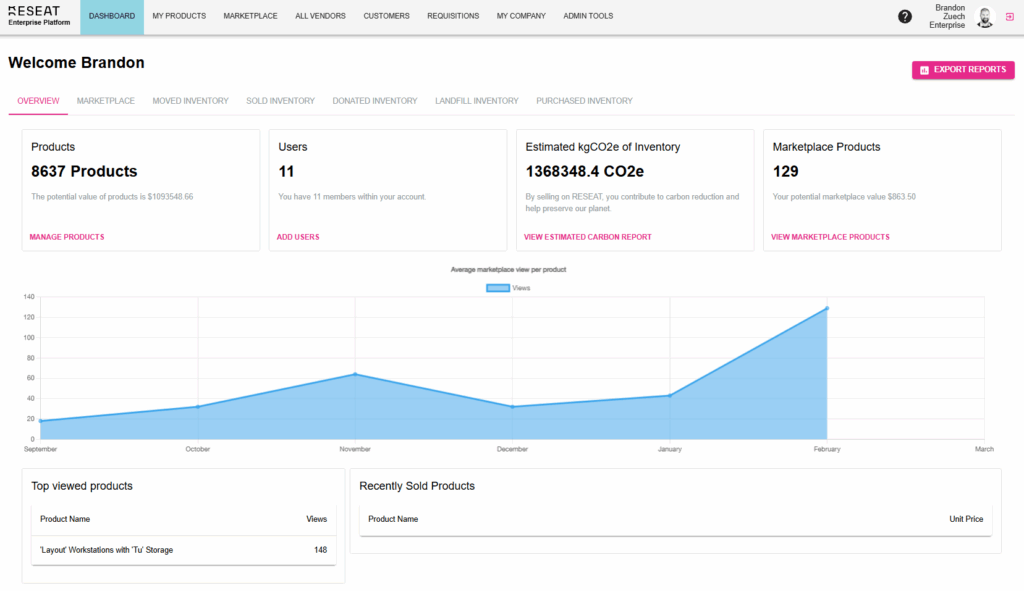Carbon impact reporting
Tracking carbon impact and Scope 3 emissions for furniture is essential for meeting sustainability goals and compliance requirements. It helps enterprises optimize procurement, extend asset lifecycles, and reduce waste while strengthening their ESG commitments.

Some key features of our reporting system
Exportable
Easily generate reports and share carbon impact metrics with stakeholders.
Onsite carbon footprint
Gain visibility into the emissions generated by your furniture assets.
Offset by selling
Track how much CO₂ you’ve saved by giving furniture a second life.
Landfill transparency
Measure the volume of furniture sent to landfills.
Visibility of your donations
Monitor where donated furniture goes and its environmental impact.
See what's been moved
Track furniture relocations and optimize asset management.
Transparency is around the corner
In the United States, several regulations promote transparency in corporate carbon emissions reporting, which can encompass emissions from furniture inventories:
Securities and Exchange Commission (SEC) Climate Disclosure Rule – Federal
Description: Proposes that public companies disclose climate-related risks and greenhouse gas (GHG) emissions, including Scope 1, 2, and, in some cases, Scope 3 emissions, to inform investors about climate-related financial impacts.
Why It’s Relevant to RESEAT: Aims to standardize climate risk reporting, enhancing investor awareness and corporate accountability.
California Senate Bill 253 (SB 253) – California
Description: Requires large corporations operating in California to disclose their GHG emissions, including Scope 1, 2, and 3 emissions, aiming to enhance transparency and accountability in corporate carbon footprints.
Why It’s Relevant to RESEAT: Mandates comprehensive emissions reporting, setting a precedent for corporate environmental responsibility.
EPA Greenhouse Gas Reporting Program (GHGRP) – Federal
Description: Requires facility-level reporting of GHG emissions from large industrial sources, providing data to inform policy and regulatory initiatives.
Why It’s Relevant to RESEAT: Establishes a comprehensive framework for GHG emissions reduction and reporting, serving as a model for other states.
More and more corporations are leaning into sustainability
Employee Demand for Sustainability Investments
A Deloitte survey revealed that 69% of employees want their companies to invest in sustainability efforts, including reducing carbon emissions, utilizing renewable energy, and minimizing waste.
Impact on Employer Appeal
An IBM study found that approximately 70% of employees or potential employees consider sustainability programs as a factor that makes employers more appealing, indicating that robust environmental initiatives can enhance talent attraction and retention.
Perception of Employer Sustainability Efforts
A Forbes article reported that 83% of workers believe their employer is not doing enough to be more sustainable and tackle climate change, highlighting a significant gap between employee expectations and corporate actions.
Influence on Job Decisions:
According to a study by Visit.org, 64% of millennials won't take a job if their employer doesn't have a strong corporate social responsibility policy, and 83% would be more loyal to a company that helps them contribute to social and environmental issues, underscoring the importance of sustainability in employment choices.
Let's tackle your sustainability goals together
Talk to our specialists focused on decommissions and inventory tracking.
